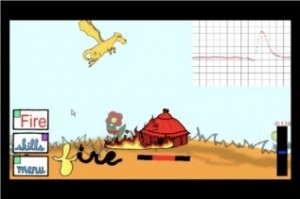 The 2011 Finals of Microsoft's Imagine Cup competition is underway this week in New York City. The Imagine Cup brings together student technologists from around the world to showcase technologies they've designed and built. But the technologies here have a particular mandate. They aren't simply new or cool or innovative. They must address some of the world's most pressing issues, as outlined by the United Nation's Millennium Goals.
The 2011 Finals of Microsoft's Imagine Cup competition is underway this week in New York City. The Imagine Cup brings together student technologists from around the world to showcase technologies they've designed and built. But the technologies here have a particular mandate. They aren't simply new or cool or innovative. They must address some of the world's most pressing issues, as outlined by the United Nation's Millennium Goals.
One of the categories in the Imagine Cup competition is Game Design, and when it comes to video games, the idea of making the world a better place often involves games that are educational, games that raise awareness.
But one of the U.S. teams competing here, Team Dragon, has built a game that goes far beyond that. The game is called Azmo the Dragon, and it's designed to help encourage children who suffer from asthma to maintain their daily logs.
Asthma is the most common chronic illness in children, costing the U.S. alone almost $20 billion in avoidable emergency room visits and lost productivity. For children who suffer from asthma, an attack is a traumatic experience, but routine asthma care -- performing regularly breathing tests -- feels like a chore, and not surprisingly, kids' adherence rates to their illness management routines are very low.
Enter Azmo the Dragon, a mobile game that makes breathing tests fun (and as it's a mobile phone game also means that it's available on a device that a lot of kids not just own but that they carry with them 24-7 and are unlikely to lose). The game connects the mobile phone to a spirometer (the device that asthma sufferers breathe into to record their lung performance), so as kids breathe into it, they control Azmo a fire-breathing dragon. Azmo's fiery breath destroys villages and castles and there are various worlds and levels through which kids can play.

